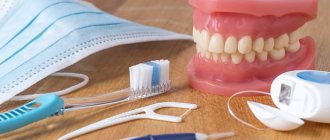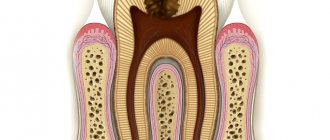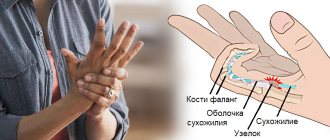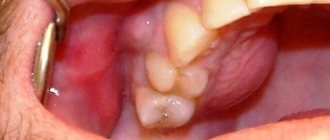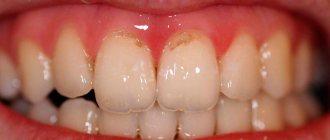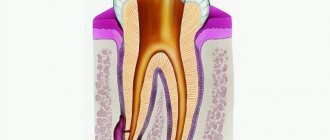Cysts in the human body are closed cavities, a kind of capsule, with contents. Their localization can be very different, but dentistry deals with the treatment and prevention of cysts located in the oral cavity. They can range in size from microscopic, in which case they are very difficult to detect with the naked eye, to impressive, which significantly complicates the quality of life of patients. The causes of cysts and methods of their treatment often depend on where exactly they formed.
Let's consider each of the options in more detail.
Content:
- Why does a cyst grow in the oral cavity?
- Types of oral cysts
- Signs of a cyst
- Examination of patients who have a cyst in their mouth
- How to treat
- Treatment of cystic formation at home
- How to reduce the likelihood of developing education
Sometimes, when visiting a dentist, a patient hears a strange diagnosis - mucocele.
More simply, it sounds like an oral cyst. Underneath this disease lies a cavity tumor neoplasm containing mucous contents. It is benign and develops due to obstructed outflow of secretions produced by parenchyma cells. The peculiarity of mucocele is that it does not have a strong epithelial membrane. Usually localized on the mucous membrane of the lower lip or under the tongue. It can also form in the chewing area. Neoplasms of the submandibular zone are very rarely encountered in dental practice.
Conducted studies demonstrate that most often young people under the age of thirty experience mucocele. The disease also occurs in adolescent children.
Treatment methods used for cysts in the oral cavity
For small cysts, no treatment is required. Carry out regular monitoring of educational growth. Medications are used when the tumor increases in size. The drugs help reduce inflammation and prevent suppuration.
The following treatment methods are used:
- treat the oral cavity with furatsilin solution; use antibacterial solutions for the throat (Chlorophyllipt, Tonginal, iodine preparations); take immunomodulators and vitamins; Vasoconstrictors are prescribed.
At high temperatures, antibiotics and antipyretics are prescribed.
Why does a cyst grow in the oral cavity?
Most often, doctors are unable to determine the exact cause of the disease. It is believed that its development can be caused by:
- repetitive trauma to the mouth;
- inflammatory pathologies of the oral mucosa;
- congenital obstruction of the excretory ducts of the salivary glands.
Some doctors are inclined to believe that frequently appearing cysts of the sublingual salivary gland indicate a non-standard structure of the latter. There is also a dysembryogenetic version of the origin of tumors. But dentists give the main importance to the traumatic factor. Thus, blisters on the inside of the lower lip often form due to the habit of constantly biting it.
The pathogenesis of the disease can be described as follows:
- The excretory duct of the salivary gland becomes blocked for a certain reason.
- Internal hydrostatic pressure increases. The mucus accumulates and cannot come out.
- Throughout the day, the mucous secretion permeates the surrounding tissues.
- Swelling forms and the blood vessels are compressed. Tissue permeability is impaired.
- A capsule consisting of connective tissue is formed. She is gradually growing.
What is a retention cyst in the mouth?
A pharyngeal retention cyst is a thin-walled cavity that is filled with purulent or serous fluid. It looks like a round dense thickening. It is formed when the excretory duct of the gland is blocked. These benign formations can be congenital or acquired.
They are formed under the influence of several factors. This may be a thickening of the secretion produced by the glandular tissue or the ingress of various small particles into the cavity. More often, this acquired formation appears in older men. Congenital retention cysts are most often detected in infancy.
Types of oral cysts
Based on their origin, mucoceles are:
- true;
- extravasal.
The first ones lack their own membrane and are covered with a gland capsule. They occur due to blockage of the duct and accumulation of mucus. The second are post-traumatic. They are formed when the tightness of certain structures is broken and the mucous secretion enters the surrounding tissues.
According to the localization criterion, the neoplasm is classified into:
- Sublingual. It is located in the hyoid-maxillary muscles or submandibular region. During rapid growth, it grows very quickly and then causes serious discomfort.
- Submandibular. Located in the lower submandibular region. It feels like a dense ball to the touch. Promotes disruption of the natural mechanism of salivary fluid secretion.
- Parotid. Rarely encountered in dental practice. It can be very painful when you open your mouth wide. It is formed due to impacts, injuries, after which the inflammatory process caused the closure of the salivary ducts.
- Extravasal. Most often found on the inner surface of the lip. Occurs due to mechanical damage. The inside is filled with granulation tissue.
What is a dental cyst (root cyst)
A cyst on the root of a tooth is a tumor-like formation surrounded by a dense fibrous membrane consisting of stratified mucous epithelium. The internal space of the sac is filled with serous or purulent fluid. The size of the cavity can vary widely: from 0.1 to 3 cm. Cysts less than 5 mm are called granulomas.
The most common location of dislocation is the area of the apex of the tooth root. Therefore, such cavities are called radicular (“radix” - root). They can be located near the entrance to the root canal, between the roots, or at the top under the crown. Other localization areas:
- near the alveoli of the frontal segments;
- under the third molars (wisdom teeth);
- inside the maxillary sinus.
A cyst in a tooth can have different origins. According to this feature, the following types of formations are distinguished:
| Variety | Description |
| Radicular | Found in the area of the apex of the roots of any tooth. The main reason is the destruction of osteocytes due to advanced caries and pulpitis. |
| Follicular (pericoronal) | Benign tumor of non-inflammatory origin. Occurs in the area of transition between enamel and cement. Formed from the tooth germ due to disruption of eruption. |
| Periodontal | A congenital dental cyst formed from remnants of the epithelium of the dental plate. Most often localized in the premolar area. |
| Retromolar | Formed as a result of carious inflammation or abnormal eruption of the eighth segment |
| Residual | Appears due to incorrect extraction of the dental unit and poor revision of the alveoli. |
| Primordial (keratocyst) | Develops from epithelial cells of the enamel organ. Capable of keratinization. Localized in the corner of the lower jaw, near the lower premolars. |
Signs of a cyst
Among the main symptoms of the disease:
- The appearance of an unusual protrusion on the soft tissues of the mouth. It may resemble an abscess. It usually has a bluish color with a burgundy border, but it can also match the tone of healthy gums. The “older” the mucocele, the thinner its walls become. The “bubble” is movable; it is not fused to the surrounding tissues.
- Discomfortable sensations while chewing food. There is a feeling as if there is a foreign object in the mouth that is constantly in the way.
- An unpleasant feeling of constriction of the mucous membrane. In this case, pain does not occur.
The cyst may burst if there is a lot of pressure on it. Spontaneous opening sometimes occurs while eating. The difficulty is that afterwards it forms again - through the passage in the mucous membrane, the cleared cavity is refilled with liquid contents.
Manifestations of tonsil cysts
Symptoms of having a palatal cyst depend on its size and location. Cysts up to 1 cm in size usually do not manifest themselves, are invisible and painless. People, as a rule, do not even suspect their existence. Cysts can be discovered accidentally during routine examinations by an otolaryngologist.
You can suspect the presence of a cyst in the tonsil if you have bad breath with healthy teeth and normally functioning digestive organs. The smell comes from food particles that become trapped in the area of the cyst and begin to decompose there. As the size of the cyst increases, a person may experience the following symptoms:
- feeling of constant presence of a foreign body in the throat;
- sore throat or discomfort;
- difficulty and mild pain when swallowing solid food;
- hoarseness of voice.
Young children may begin to choke on food. If the cyst grows towards the pharynx, then a feeling of lack of air may occur, which is especially pronounced in children whose larynx is small. The existence of the cyst itself maintains chronic inflammation. The cyst excludes areas of the tonsil from immune protection.
Examination of patients who have a cyst in their mouth
Diagnosis of the described disease is simple.
The doctor examines and palpates the abnormal lesion and studies the symmetry of the face. If the mucocele has reached a diameter of more than one and a half centimeters, then its color is blue. When the lesion is opened, viscous yellow contents are released. If the resulting biological material is submitted for analysis, a large amount of salivary proteins and amylase will be found in it. If necessary, the Trommer reaction is performed to confirm the preliminary diagnosis.
During ultrasound diagnostics of the salivary gland, the doctor observes an anechoic formation of a round shape. Its borders are smooth. The fact that the patient has a mucocele is said:
- presence of granulation lining;
- absence of epithelial membrane;
- the presence of mucin and protective blood cells.
If there is doubt about the benignity of the tumor, the patient is referred to an oncologist.
Why do cysts form on teeth?
Dental cysts are a polyetiological disease. Slow inflammatory reactions around the apical zone of the root can cause the development of radicular tumors. A follicular dental cyst is formed due to a disruption in the development of the dental germ of a permanent tooth from the dental sac.
The reason for the disruption of the development of the tooth germ is chronic periodontitis of temporary teeth, due to which the division of epithelial cells occurs around the crown of the unerupted segment. The pathogenesis of a retromolar cyst involves the formation of a bone pocket. Due to inflammation, it closes to form a cavity.
Provoking factors leading to the formation of a cyst under a tooth:
- complicated course of caries, pulpitis, periodontitis;
- incorrectly installed orthopedic design;
- maxillofacial injuries;
- tooth root fracture;
- complicated infections of ENT organs;
- pathology of teething, etc.
How to treat
It is very dangerous if a person tries to remove a cystic formation on his own and, to do this, puts pressure on it or bites it. Any mechanical influences have a negative effect on the course of the disease. Due to external pressure, the liquid inside the bubble begins to flow beyond its boundaries. Afterwards it accumulates again in the inflamed area. But at the same time, the risk of infection of damaged tissues increases significantly.
Doctors most often treat mucocele surgically. If the “bubble” is localized on the lower lip, two semilunar incisions are made in its projection, after which the internal neoplasm is isolated along with all its contents. Finally, stitches and a sterile pressure bandage are applied.
If the problem concerns the sublingual area, the following can be done:
- cystectomy;
- cystsialadenectomy.
In the first case, only the cyst itself is removed. It is cleaned and cut out. In the second type of surgery, the gland is also removed.
If there is a formation in the parotid zone, a parotidectomy is performed - complete or partial. It involves excision of the cyst and part of the parenchyma. Lesions located in the submandibular area are always removed along with the gland.
If we are talking about treating a child or a weakened elderly person, the dental surgeon may decide to excise only the dome (upper part) of the abnormal structure.
Surgical removal of the cyst
There are several methods of surgical treatment of this benign neoplasm. A retention cyst is removed using one of these methods:
- Complete excision along with the contents. The patient is given general anesthesia. Then the bubble is cut out along with the internal contents. Biting. It is performed both under general anesthesia and with local anesthesia. This depends on the location of the tumor. During this intervention, part of the cyst wall is removed. Then its entire contents are pumped out. Piercing. The tissue is pierced with a needle in the place of greatest swelling on the formation. Then the fluid is removed from the cyst. The cavity is sanitized.
The last option is considered the fastest and technically simplest method. But there is a risk that the cyst will refill with contents. She reappears in the same place.
Treatment of cystic formation at home
Home therapy for oral cysts only makes sense if for some reason you cannot get to a dental surgeon in the next few days. It consists of rinsing with herbal solutions and antiseptics. You can also make compresses with anti-inflammatory herbal medicines.
If the hearth breaks through, it’s too early to rejoice. Most likely, it will soon reappear in its original place. This is how cysts work - their contents expire, but the outer layer remains.
Under no circumstances should you treat a bulge on the gum or mucous membrane as a regular pimple. Any attempts to open it mechanically will not lead to anything good. But the resulting wound can become infected. Then the inflammation will spread to deeper layers in a fairly short time, and it will be much more difficult to cure.
What happens if you don't treat a dental cyst?
The formation does not manifest itself clinically for a long time. The progression of the disease leads to discomfort in the pathological area (especially when chewing food). Over time, a tubercle forms on the surface of the gum near the root area, which gradually increases. The mucous membrane changes color and swelling appears.
When the process suppurates, a person experiences symptoms of inflammation and intoxication: hyperthermia, headache, toothache, chills, tachycardia. A fistula may form in the middle of the protrusion, from which the contents of the cavity are released.
If you do not start treating cystic formation in a timely manner, serious complications may develop:
- phlegmon;
- lymphadenitis of nearby lymph nodes;
- inflammation of the maxillary sinuses;
- periostitis (spread of infection to the periosteum);
- osteomyelitis;
- abscess;
- deformation of the dentition;
- blood poisoning.
How to reduce the likelihood of developing education
To minimize the risk of mucocele formation, you need to follow the rules:
- lead a healthy lifestyle, quit smoking;
- carefully observe oral hygiene;
- rinse your mouth after every meal;
- eat a balanced diet;
- do not put foreign objects in your mouth;
- get rid of the habit of biting your lip;
- correct malocclusion;
- undergo oral hygiene every year;
- avoid trauma and chemical burns to the lips;
- promptly replace dentures;
- Follow the rules for wearing braces and caring for them.
People who follow preventive measures are much less likely to need treatment for oral cysts. If a lesion has appeared and is growing in size, there is no need to expect it to disappear on its own. This happens very rarely. It will either “deflate” or be filled again with contents and ultimately may grow to such a size that it will not be possible to do without emergency surgical intervention.
Consequences
Without adequate treatment, the dental cyst continues to grow and develop; in advanced stages, large neoplasms destroy the bone tissue of the skull, as a result it is replaced by connective tissue formations, which leads to the development of the following complications:
- dissolution of the jaw bone, which depends on the growth of the cyst;
- the formation of pus in the cyst, further purulent inflammation can lead to the development of an abscess;
- inflammatory process of lymph nodes located near the source of infection;
- development of osteomyelitis or periostitis;
- development of chronic sinusitis when the cyst grows in the maxillary sinus;
- pathological fracture of the jaw bones when the cyst reaches a large size;
- development of phlegmon due to a long-term purulent inflammatory process in the cyst;
- sepsis – blood poisoning;
- degeneration of a cyst into a malignant tumor without timely treatment.
Many patients are interested in why a dental cyst appears in the maxillary sinus, how dangerous it is and its symptoms. The formation of a cyst of this type occurs as a result of untreated inflammation of the tooth root in the upper jaw. A granuloma forms at the root of the tooth, which increases in size and becomes a peri-radicular cyst, then takes a position in the maxillary sinus. The volume of such a cyst can reach 9-12 cubic centimeters.
The symptomatic picture includes painful sensations, the nature of which is similar to trigeminal neuralgia, pain in the occipital, temporal and parietal regions of the head. Externally, a dental cyst can be identified by the asymmetry of the face. Tooth cyst - photo shows a cyst in the maxillary sinus.
Prevention of recurrence of tonsil cysts
After removal of the cysts, relapse of the disease may occur. To avoid this, it is necessary to prevent the occurrence of situations that provoke inflammation of the mucous membrane of the oropharynx. Try to promptly treat ENT diseases, especially tonsillitis, and avoid injury to mucous tissues. If you smoke, if possible, give up the bad habit or reduce the number of cigarettes you smoke to 1-2 per day. Tars and other substances contained in tobacco have an irritating effect on the throat and can provoke an exacerbation of sore throats.
If the patient has a history of frequent ENT diseases and relapses of tonsillitis, then the doctor may recommend removing the entire tonsil. A tonsillectomy will relieve you of chronic infection and many other health problems. But tonsil removal is carried out according to indications. You can talk about the need for total resection with the doctors of the CONSTANTA Clinic at your appointment.
If you have any questions or make an appointment with a specialist, please call: (4852) 37-00-85 Daily from 8:00 to 20:00
Sign up for a consultation
Surgeries for tonsil cysts
The smaller the size of the cyst, the easier it is to perform surgical treatment. Small neoplasms with a thin wall are usually opened and the contents are pumped out. In the future, treatment continues and consists of the use of anti-inflammatory drugs and high-quality antiseptics. If this technique turns out to be ineffective, a classic operation is performed, when a specialist removes the tumor itself or all the tonsils if they show signs of hypertrophy and do not perform their protective functions.
The extent of surgical intervention depends on the size of the tumor, the condition of the ENT organs and the general well-being of the patient. The operation can be performed either under local anesthesia or general anesthesia. As a rule, long-term hospitalization of the patient is not required. It is very important to remove the cyst completely to eliminate the risk of recurrence of the pathology in the future. If the tumor is large, actively growing and often worsens tonsillitis and other ENT diseases, then a tonsillectomy is prescribed - an operation to remove the tonsils.
In our Clinic, such surgical interventions are performed using high-quality endoscopic equipment. Often, tonsillectomy is the only correct solution for frequently recurring tonsillitis and cysts on the tonsils.
After surgery, the patient is under the supervision of specialists for some time. Doctors monitor the patient’s condition and, if problems occur, provide the necessary medical assistance. The first day after removal of cysts or tonsils, you must observe relative rest: sports, visiting baths and saunas, and public swimming pools are prohibited. These restrictions are necessary to prevent bleeding and prevent the development of infectious complications. Food should be warm and as gentle as possible. During the first weeks, you should not eat foods that can injure the oral mucosa.
In the postoperative period, specialists can prescribe medications whose actions are aimed at relieving sore throat, relieving signs of inflammation and preventing secondary infections. Local procedures for gargling and irrigating the throat with antiseptics are also prescribed. Antiseptic treatment of the wound remaining after surgery must be carried out several times a day.
You should be attentive to your well-being and if you have any complaints, contact your doctor. Surgeries to remove cysts are successful, but in any case, patients must visit an otolaryngologist for several more months so that the doctor can monitor the quality of healing of the mucous membrane and, if there is a risk of relapse of the disease, can take all necessary therapeutic measures.
If you follow all medical recommendations and avoid heavy physical activity in the first weeks after surgery, the risk of relapse of the disease and complications will be minimal. You can ask the specialists of our Clinic in Yaroslavl all your questions. We will be happy to advise you and help you even in the most difficult clinical situations. For this, doctors have everything they need: innovative technology of European quality, rich practical experience of otolaryngologists, professional knowledge.
Surgical intervention (opening a tonsil cyst)
In cases where drug treatment is unsuccessful or when the patient experiences obvious, persistent symptoms, the doctor recommends surgical intervention, which helps prevent relapses in the future.
Before opening the cyst, the otolaryngologist performs local application (irrigation, lubrication) anesthesia, opens the cyst with a scalpel and evacuates the contents. After the intervention, the doctor treats the site of the process with antibacterial drugs and prescribes antiseptic therapy.
If necessary, upon completion of the intervention, the otolaryngologist can take the contents of the cyst for analysis or material for histological examination.
If repeated cystic formations occur, the cyst refills with contents, then the most effective method is considered to be surgical intervention, i.e. complete removal of the cyst with its membranes.
